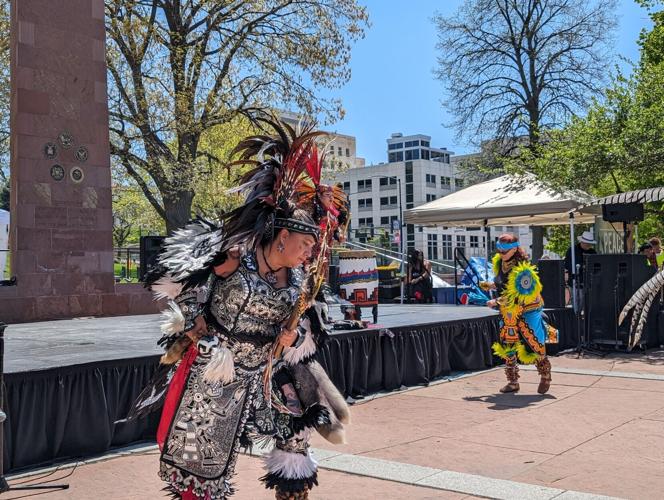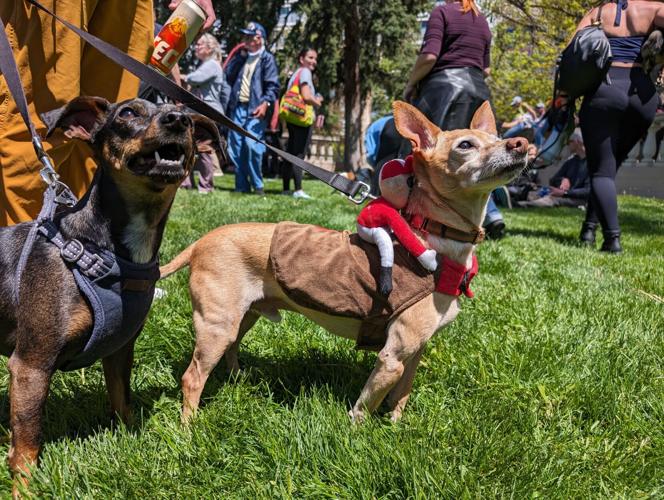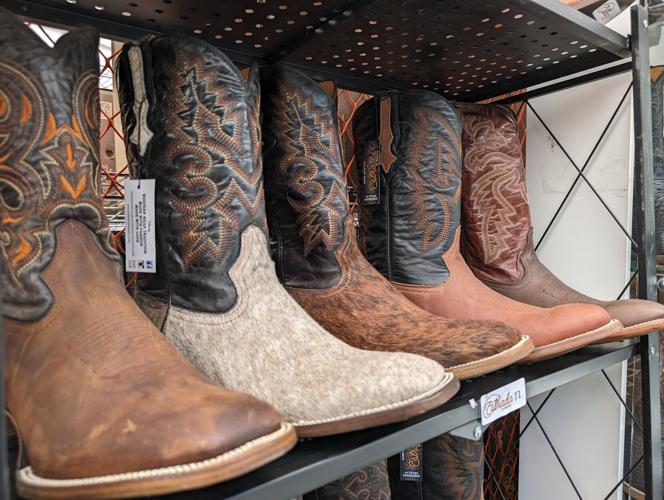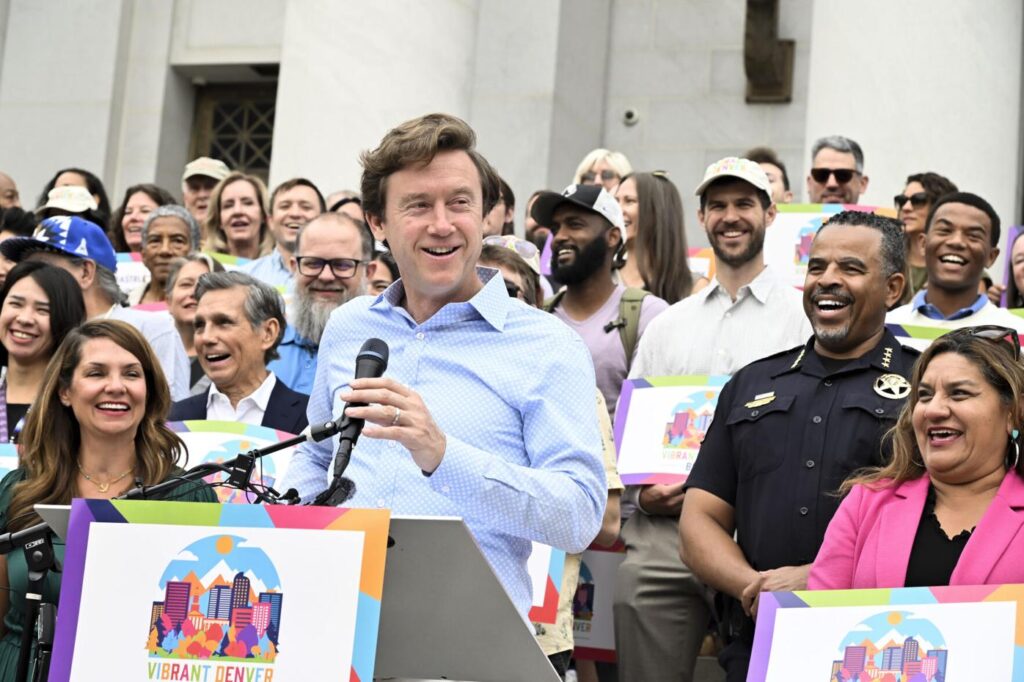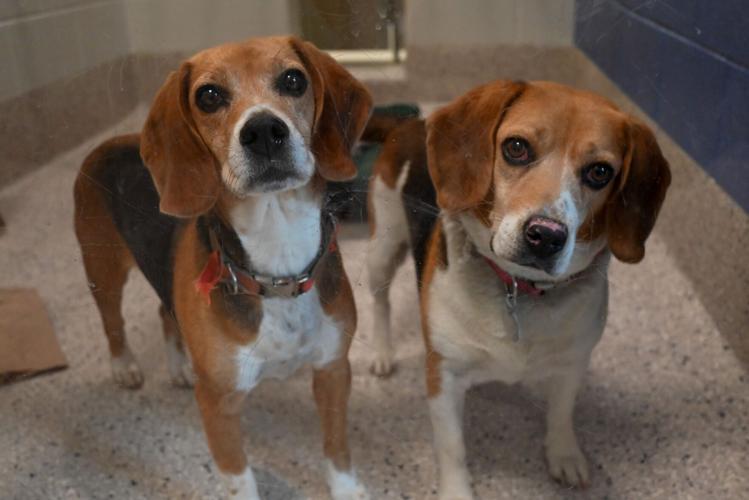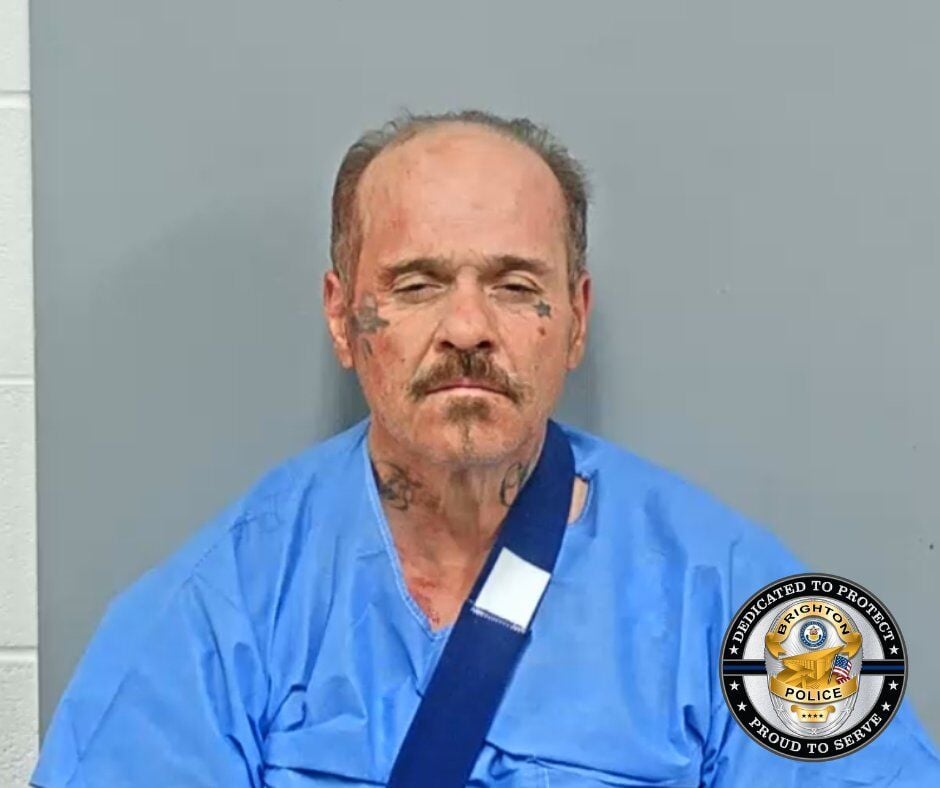Denver Cinco de Mayo celebration highlights culture, economic development
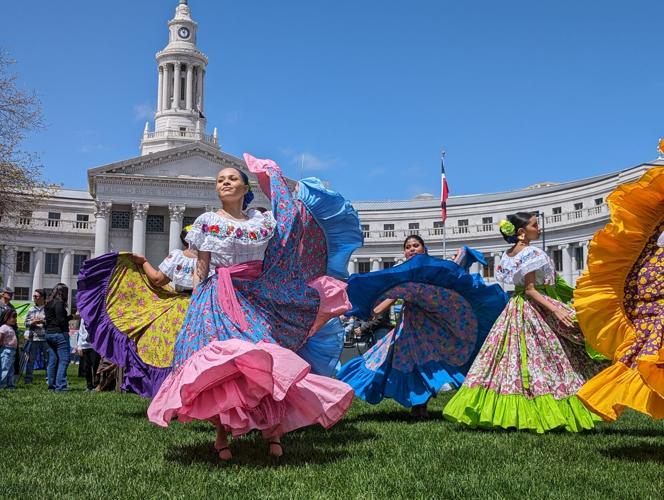
Members of Lisa T's Dance Academy perform traditional Mexican dances on the yard of Civic Center Park during the Cinco de Mayo celebration Saturday. "It gives me a chance to express my dance studio with my students," Lisa Trujillo, owner and dance instructor, said. "We get to share our culture, beautiful music and just the lively colors of Mexico."
Sage Kelley sage.kelley@denvergazette.com
The streets of Denver boomed with Mexican culture as the city’s annual Cinco de Mayo festival kicked off Saturday.
From a lowrider parade to traditional Mexican dances, chihuahua races, food trucks and handmade goods, Civic Center Park opened the 2024 festival season with the largest cultural celebration in the state — a two-day festival of all things Latino continuing a tradition that started over 50 years ago.
But the festival, held in Civic Center since 1993, is more than just a fun day in the spring sun. It’s an opportunity to share community and bring up local Latino-owned businesses.
“Cinco de Mayo nationally gets dubbed as just a beer fest. Really, it’s far more cultural than that,” said Andrea Barela, CEO at NEWSED Community Development Corporation, the organizer of the event since 1988.
“When you come to our fest, it’s like visiting the heart of Mexico for an entire weekend… We put this event on because it supports our organization but it’s also very important that Colorado supports its Latino heritage.”
That Latino culture ultimately makes up 21% of the state’s population, according to the Colorado Hispanic Chamber of Commerce.
Local and worldwide history
Cinco de Mayo — May 5 — began to to mark Mexico’s victory over the French at the Battle of Puebla on that date in 1862.
The holiday is not to be confused with Mexico’s independence day, which is celebrated on Sept. 16.
Though Cinco de Mayo is celebrated in Mexico, its large festival presence is centered in the U.S. — stemming from the Chicano Movement in the country in the 1960s when Mexican-Americans fought against institutional racism.
One of the movement’s Denver highlights came in 1969, when nearly 300 students staged a walkout from West High School in the Lincoln Park neighborhood to support the Latino equality.
To share their heritage, the community started the Cinco de Mayo festival on Santa Fe Drive in 1973 to support locally businesses and culture.
NEWSED revived the celebration in 1988, eventually upscaling to downtown Denver.
“It just grew significantly in popularity year after year and became it’s own phenomenon. It got too big for Santa Fe Drive,” Barela said.
Now, the festival at Civic Center brings in more than 400,000 people, according to Visit Denver.
Unfortunately, Barela noted, the holiday has now become synonymous with drinking alcohol — something she’s seen happen to other cultural holidays like Oktoberfest and Saint Patrick’s Day.
But to the people holding the events, it means much more.
“When you go to those events and see a lot of the civic organizations that are associated, this isn’t about that for those groups. This is about celebrating heritage,” she said. “The Mexican culture is very beautiful and very complex and it’s deeply tied to the state.”
Fun for all
Though the nature of the festival highlights Mexican culture, the family-friendly activities — like live bands, dances and bounce houses — are for everyone.
“The paradigm that we’ve had to fight off is that it’s not safe because it’s a people-of-color event. It’s a shame,” Barela said. “We’re trying to have everyone come to our event. We don’t care who you are.”
To Barela, it’s all about showing and supporting the wide variety of cultures in the region.
“I like to come and see my people, our culture and backgrounds,” Yadira Gutierrez, who was born in Mexico and has lived in Denver for 30 years, said. “I like to show other cultures what we offer. All of our products.”
Gutierrez has visited the festival multiple times, but it’s her first time showing her small business, Bohemian Blooms, which creates custom hats and leather bags.
She added that she feels comfortable at the event and is proud of what it has become.
“I love it,” Juan Estrada, owner of Estrada Artisanal, said of the Cinco de Mayo celebrations in the U.S. “It’s something that I like about this country. Every different culture is here but it makes one. It’s really special.”







